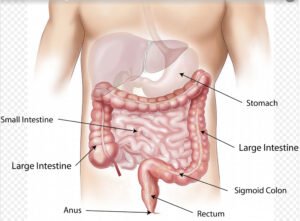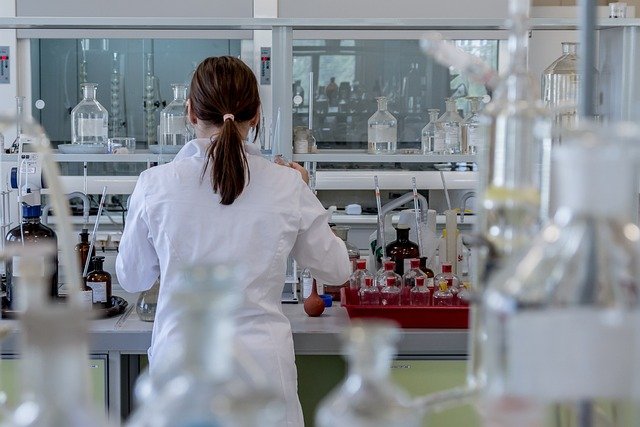Is being lactose intolerant normal?

What is lactose intolerance?

Introduction
To answer why lactose intolerance is normal or not, the medical definition, causes, signs, and symptoms should be clearly identified.
The first thing that needs to identify, is the difference between the two medical terms or names “lactose” and “lactase”. These two words will walk with the reader for this article side by side.
So, “lactose” is (a milk sugar that is a type of carbohydrate) and in order for the body to absorb the nutrient in food containing lactose such as vitamins and minerals, the body needs to simplify it to simple sugar (glucose and galactose).
Whereas, “lactase” is an enzyme that is responsible for the digestion of lactose by breaking the molecule down into glucose and galactose” (Bernstein & Munoz, 2020).

There are two types of lactose intolerance, primary and secondary:
Primary “lactose” intolerance or “lactase” deficiency is believed to be caused by a genetic factor that affects the digestion of “lactose” by the enzyme “lactase” which worsens as the person ages. This factor starts almost by age 20 and varies by ethnic group variation such as Europeans, Africans, Hispanic, Middle Easterns, Indians, etc… (Bernstein & Munoz, 2020).
Secondary lactose intolerance or lactase deficiency is a reversible, treatable, and temporary health condition. This deficiency is caused by a lack of activity of the enzyme “lactase” which is responsible for digesting and simplifying the milk sugar “lactose”.
This secondary health condition is mainly caused by damage to the intestinal wall which results in a reduction or lack of the enzyme “lactase” necessary for lactose digestion. The intestinal wall may be damaged by some of digestion health problems in the intestine or by untreated illnesses such as celiac disease.
lactose intolerance is a temporary and treatable symptom and a curable health condition. Lactose intolerance in medical terms is defined as the “ inability to digest foods that contain lactose” (Bernstein & Munoz, 2020). It is a health condition related to lactose lack of digestion in the small intestine.
Caution: In many health problems or diseases, a wrong diagnosis results in more health complications, worsen symptoms, or could make simple and treatable symptoms onset of a disease. For example, the majority of lactose intolerance cases are temporary and treatable, but leaving the underlying health condition not treated can result in a disease affecting the small and large intestines in particular.
What are the signs and symptoms of lactose intolerance?
People who produce an inadequate amount of the enzyme “lactase” to digest the milk sugar “lactose” have lactose intolerance. As mentioned above, the digestion of lactose happens in the small intestine to absorb the nutrients in carbs milk sugar such as calcium.
The nutrients in the milk pass to the blood to deliver it in turn to the rest of the body for energy. Thus, lactose intolerance signs and symptoms will be experienced in the stomach and intestinal sections (Medeiros & Wildman).
The signs and symptoms of lactose intolerance vary by individual but can be summarized as follows:
- Cramping and pain in the stomach and gut section
- Diarrhea
- Gas buildup (bloating and flatulence)
- Vitamin D deficiency
- Calcium deficiency
Is lactose beneficial to the body?
Lactose is simply a milk sugar which is a type of carbohydrate usually found in milk and dairy products. Lactose, or “milk sugar” is composed of two main basic or simple sugar, glucose and galactose. Food containing lactose is very beneficial for the human body since it contains a lot of vitamins and minerals such as calcium, magnesium, phosphorus, and more.
Food containing lactose also aids in providing energy, and in supporting the growth of good bacteria in the large intestine, in addition to aiding in absorbing calcium in the small intestine (Bernstein & Munoz, 2020, p62).
In summary, the benefits of a food containing lactose are:
- Provide energy to body cells
- Aids in calcium absorption in the small intestine
- Support the growth of bacteria in the large intestine (the colon)
Foods containing lactose such as dairy and dairy product contains a lot of nutrients such as:
- Water
- Nitrogen protein, lipid (fat)
- Calcium, magnesium, phosphorus
- Potassium, sodium, selenium, folate
- Some iron, zinc, B vitamins, vitamin E, and K
- Vitamin A, retinol
- Fatty acid,
Is it normal to have lactose intolerance?
How does that happen?
The enzyme lactase responsible for digesting the nutrient lactose begins synthesized in the body during fetal life. The maximal activity for this enzyme (lactase) is at birth. As the person ages, the activity of the lactase enzyme begins to drop to almost 90% compared to birth time (Bernstein & Munoz, 2020).
It is worth knowing that the decline in lactase activity (the enzyme) has to do more with genetic factors and is not necessarily by diet. In the case of the lactose gene inherent, individuals who have this gene mutation noticed that they are descendants of northern Europeans, some middle Eastern and African tribes.
In addition, the developing dairy farming in such reagoind thought to link the adaption of genetic mutation to lactose intolerance developments as well (Bernstein & Munoz, 2020).
In summary, the causes of lactose intolerance can be as follows:
- Gene mutation is thought to be responsible for the decline of enzyme activity mainly in people who descend from some ethnic tribes and regions
- The enzyme that digested milk sugar “lactose” is called “lactase”. This enzyme is presented in the small intestine and declines due to aging or other health problems or deficiencies
- Vitamin D deficiency can cause a lack of calcium absorption from food containing lactose
- Several gastrointestinal disorders are responsible for the reduction of the enzyme lactase presented in the small intestine such as celiac disease, IBS, ulcerative colitis, and more.
What food contains lactose?
The main food that contains lactose is dairy, dairy products foods, some non-dairy food, and many fortified foods and beverages. Dairy food such as animal milk contains the highest amount of lactose (see Tables 1 and 2).

Lactose contents in selected food

Can lactose intolerance be treated or go away?
Yes, lactose intolerance, if not related to gene mutation, is a temporary health condition that can be treated and go away if diagnosed right. Normally,
The diagnosis of “lactose intolerance” is simple and can be diagnosed in the following common ways:
- Self-reported signs and symptoms such as diarrhea, bloating, flatulence, or cramping
- A hydrogen breath test (non-invasive test) indicates malabsorption of lactose and abnormal activity of bacteria in the colon
The treatments for lactose intolerance depend on each individual and the severity of the symptoms that existed. Avoiding all dairy and non-dairy products is not necessary at all because the body needs all the nutrients in such food. In addition, the body still can tolerate a small amount of lactose in the diet. A small amount of lactose can still be nutritious for the body and good for bacteria in the gut.
Caution: Avoiding food containing lactose is a necessary thing to do in case of severe diarrhea and whenever your doctor recommends it. you should always consult your doctor

Lactose intolerance treatment can vary, but in general, people can begin by fixing the health condition associated with the digestive system, especially the small and large intestines. Second, they can customize and control the amount and type of lactose include in their diet. Then, individuals should really take care of vitamin D deficiency since it largely affects the absorption of calcium in dairy.
lastly, consume alternative foods other than dairies such as lactose-fortified food, or supplements (Medeiros & Wildman).
In summary, after taking care of any health condition affecting the digestive system and vitamin D deficiency, the following examples of diet therapy would be a good thing to follow:
- The person can substitute dairy milk with fewer lactose contents such as chees and lower the serving size as desired
- No need to avoid food containing lactose completely because the body still can tolerate a small amount of lactose in the diet. A small amount of lactose can still be nutritious for the body and good for bacteria in the gut.
- Whenever needed, food containing calcium such as some fruits and vegetables, fortified food and beverages, salmon, and canned sardines are good substitutes for milk and dairy products.
- Consuming yogurt and fermented aged cheese are highly recommended because it contains a probiotic and the lactose is fermented already.
- Consuming the enzyme lactase in the form of capsules, tablets, or added to milk also is a good solution for those who have lactose intolerance.
- Lactose-free dairy and non-dairy products are widely available if desired
Conclusion
Milk and dairy products should not be discouraged especially for children unless they have severe diarrhea or as doctors recommend. A small amount of lactose in food still be tolerable even when the person has lactose intolerance. Minimizing the amount and load of lactose-containing food is wise and would still be tolerable. In most studies and clinical observations, 1 cup of milk (250 ml) which contains almost 12 grams of lactose still tolerable by the majority of people who have lacrosse intolerance. Therefore, 12 to 18 grams of lactose a day would not have adverse effects (Medeiros & Wildman).
In conclusion, by taking care of problems associated with the small intestine, colon, and vitamin D deficiency, in addition to considering one or more of the diet therapy explained in this article, patients will do their best to accommodate the lactose intolerance health problem.
Glossary and definitions
(Medeiros & Wildman)
“Lactase”: An enzyme that is essential to the digestion of lactose to break down the molecule into glucose and galactose”.
“Enzyme”: A protein that facilitates a biochemical reaction by lowering the energy required.
“Celiac disease”: an autoimmune disease that results in damaging the small intestine.
“lactose”: a type of carbohydrate, a milk sugar found in milk and dairy; it is digested by the enzyme lactase.“lactose intolerance”: Symptoms such as bloating, cramping, and diarrhea experienced by people who produce an insufficient amount of lactase.
References
Bernstein, M., & Munoz, N. (2020). Nutrition for the older adult (3rd ed.). Jones & Bartlett Learning.
Medeiros, D. M., & Wildman, R. E. C. (n.d.). Advanced Human Nutrition (4th ed.)




















